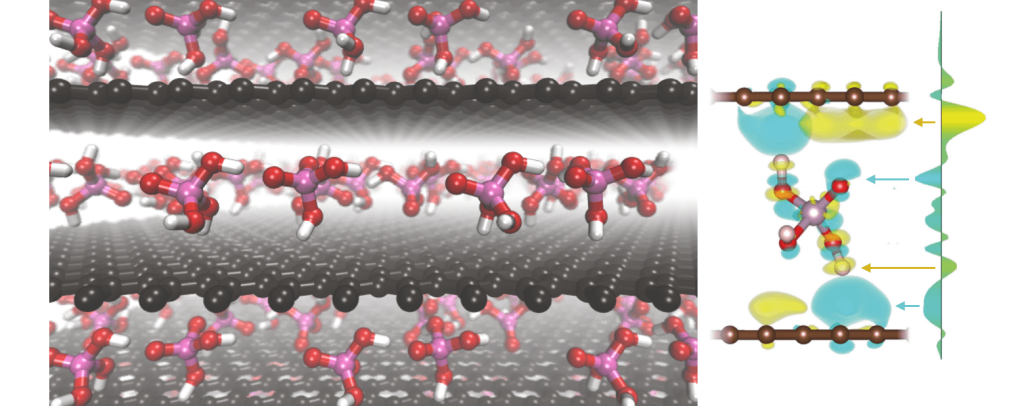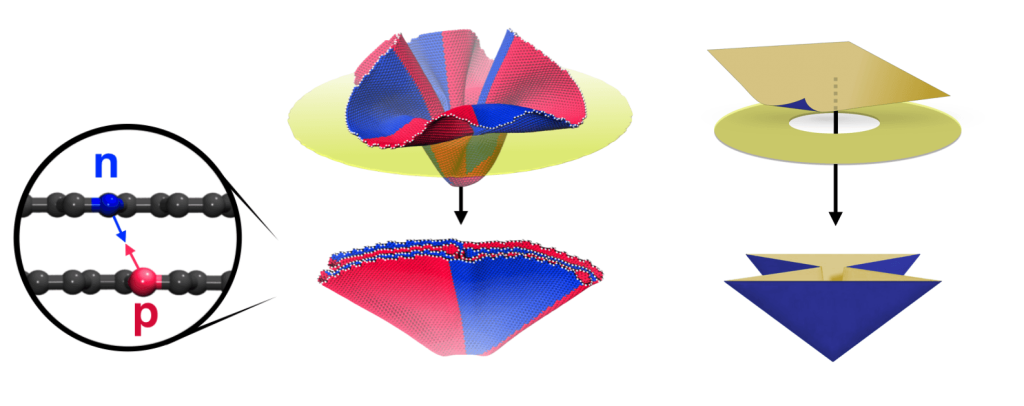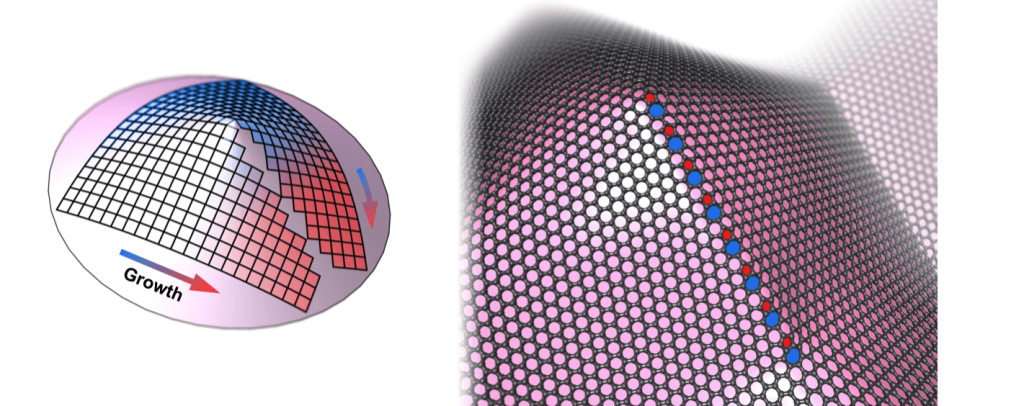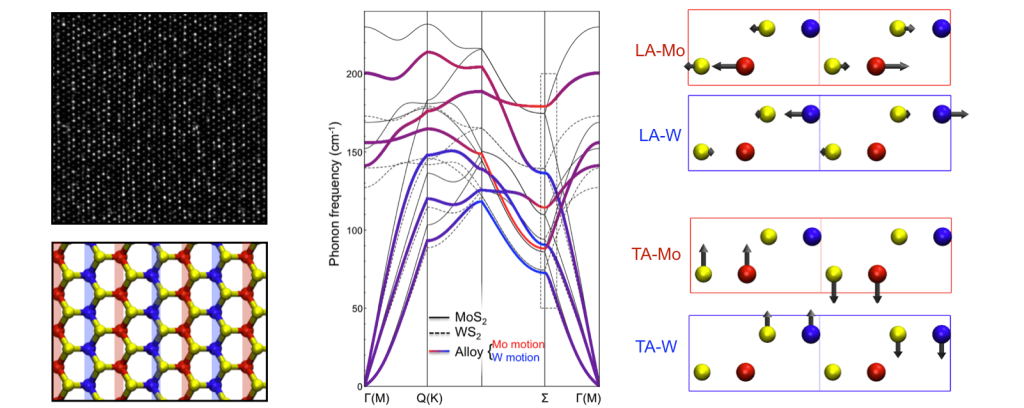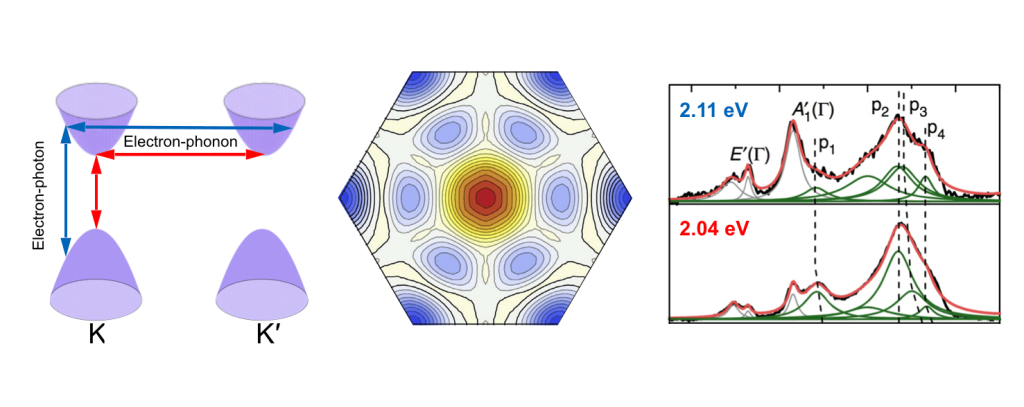About us
Our group is devoted to developing computational materials theory for 2D layered nanomaterials. We employ methods ranging from many-body perturbation theory, density functional theory, to empirical reactive forcefields to study the optical response, electronic structure, and the growth kinetics of atomically thin materials.
Why 86 elements?
That’s all we need from the pseudopotential lego store.
Get to know them. Don’t always skip technetium.
News
2024.01 Our group receives the CHIPS-Metroplex Seed Grant in collaboration with UT Dallas experimental groups to study defect dynamics and random telegraph noise in 2D semiconductor devices.
• 2023.12 Our research and educational project titled Orbital-based Descriptors for Dynamical Properties of Quantum Defects has received the NSF CAREER award! Parts of the project will support materials physics research workshops and outreach events for TAMS students, and HPC training for undergraduates.
• 2023.10 We are excited to receive our first external funding through the ACS Petroleum Research Fund Doctoral New Investigator program! This project will support our project on modeling catalytic hydrodesulfurization using realistic reaction models.
• 2023.10 Congratulations to Fatimah for receiving the Outstanding Graduate Student Poster Presentation Award at the 2023 American Physics Society Texas Section Fall Meeting! She presented the latest on developing design principles of defects in 2D materials serving as single photon emitters.
• 2023.03 UNT WiP group grant organized by Leticia (Lead), Cristina, and Fatimah is funded by APS. Congrats Leticia!
• 2023.03 Fatimah and Bimal will be presenting their research on defect modeling at APS MM 2023 in Las Vegas.
• 2022.12 Our group is awarded 501,000 CPU hours at NERSC via a user program at the ORNL Center for Nanophase Materials Sciences “Transfer learning methods and advanced first-principles methods in modeling point defects”.
• 2022.11 Our group receives the UNT AMMPI Center for Functional Materials Seed Grant to study defect properties combining first-principles theory and machine learning.
• 2022.11 Dr. Wang and Dr. Neupane head to the Infinity Festival at the Fort Worth Museum of Science and History to demonstrate molecular dynamics simulations and crystal structures in virtual reality!
• 2022.09 Bhojraj Bhandari joins the group. Welcome Bhojraj!
• 2022.09 Our group is awarded 500,000 CPU hours via the Penn State 2DCC-MIP User Proposal R0076 “Nonlinear optical response in 2D layered materials”.
• 2022.07 Fatimah’s first co-authored paper is pusblished: “Enhanced emission from defect levels in multilayer MoS2”, a collaboration with with Dr. Lin and Dr. Cui’s group. Congrats!
• 2022.06 Dr. Bimal Neupane joins the group. Welcome Bimal!
• 2022.05 Our group receives the UNT College of Science Seed Grant to study nonliear optical response in extended systems.
• 2022.05 Dr. Wang gives a talk at the Graphene and Beyond Workshop: “Why crystalize in layers: Design principles for layered nonlinear optical crystals”
• 2022.01 Trace Bivens joins the group. Welcome Trace!
• 2021.11 Our group transitions from the Talon3 cluster to TACC-Lonestar6, where we recieved 256,000 CPU hours. Happy computing!
• 2021.09 Dr. Wang gives a colloquium at the University of Arkansas Physics Department.
• 2021.09 Fatimah Habis and Leticia Damian joins the group. Welcome Fatimah and Leticia!
• 2021.09 Dr. Wang joins UNT as assistant professor.
